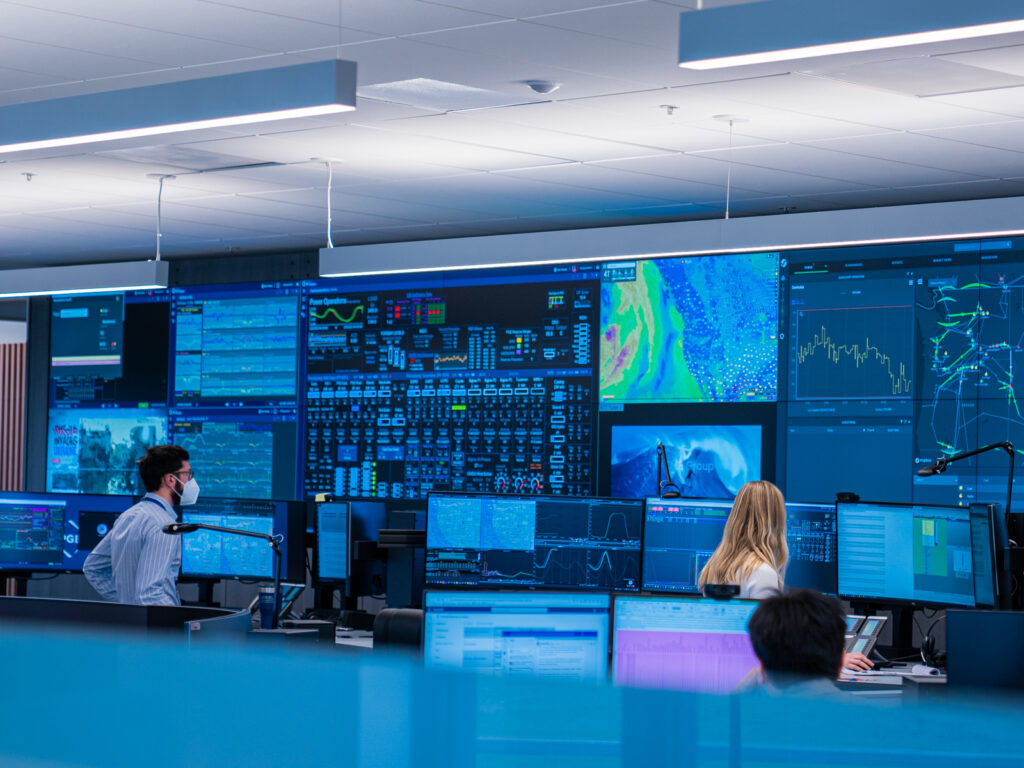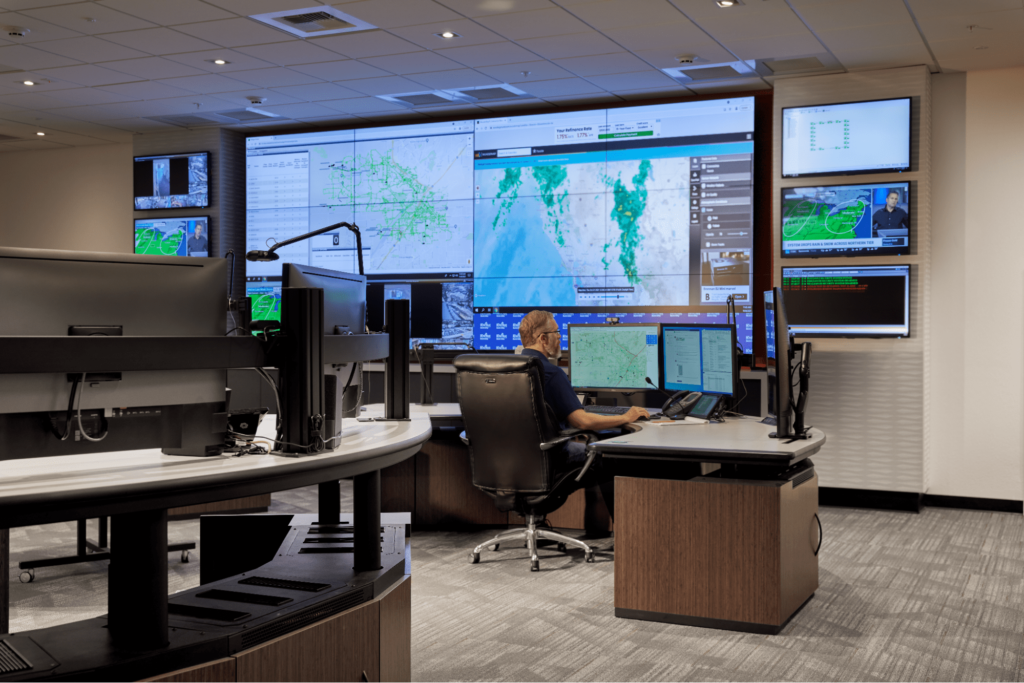Control Room Video Wall Options
Video walls come in many shapes and sizes. Many factors play a role in deciding what system is right for you. There are multiple manufacturers and technologies to choose from, and we will guide you through the process of determining which is the right solution for your video wall.
We have experience deploying each technology and understand each option’s unique engineering requirements. We also understand the different user ergonomics, maintenance, ROI, and lifecycle of each option when integrating technology into the control room space. We’re focused on education and ensuring that the end user knows how to use, service, and replace their control room video walls.
LCD technology offers a flexible solution for many designs. They can be used for large visualization surfaces or individual displays. LCD panels used in video walls aren’t quite like your home television. The systems we integrate are designed to function 24/7/365. Most panels use an LED backlight system to produce an image.
Many designs use LCD technology for several reasons, including high brightness output, high pixel density, small real estate requirements, and the lowest initial investment vs. other technologies. However, LCD panels suffer from short lifespans (requiring future replacement consideration) and visible bezels between panels.
Like the name suggests, rear projection systems involve a projector behind a screen. The light from the projector hits a mirror, which reflects it through the transparent screen to produce bright, sharp images.
Rear projection video displays are common for large video walls due to their longer lifespan and easier serviceability. Rear projection walls typically last 10-12 years, don’t experience burn-in, have high pixel density, and are repairable/upgradeable.
Rear projection cube walls have many advantages, but suffer from a higher initial investment, reduced viewing angles compared to LCD and direct view LED, visible bezels, and the largest real estate requirements (cube depth can range from 18”-36”).
Direct view LED (light-emitting diode) systems are the newest display technology on the market. They have been commercially available and used in indoor/outdoor applications, including stadium video displays and digital signage. In recent years, their use as video walls has become more common, and they can be found in control rooms, conference rooms, lobbies, and trading floors.
A direct view LED display consists of individual LED pixels, removing the need for a separate backlight, resulting in brighter and clearer images. The LEDs are semiconductor light sources that emit light when a current flows through them.
Direct view LED has advanced drastically over the last decade. The technology is now becoming sought after in the critical command environment. The recent increases in pixel density allow for operators to view the image from similar distances as rear projection cube and LCD technologies. The direct view LED systems have longer system lifespans, seamless and bezel-less visualization surfaces, and the easiest serviceability. These advantages come at the cost of the highest initial investment for all three technologies.

Video Wall Content
Mauell’s network-based video management platform, Xomnium, allows for the sharing and viewing of critical information throughout an organization using standard network equipment. Xomnium allows your team to display, control, stream, view, and share all of the data that enters your control room. Xomnium is able to expand within your organization wherever you are looking to display content.
Understanding the data on your control room video wall is predicated on understanding your data and video sources. We approach audio-visual design based on the need to manage video and audio content sources throughout your space and enterprise. Operators must be able to manipulate the source control on each display.
Video Walls for Every Industry
We understand that different industries use video walls to display different types of content. From utilities to emergency operations centers, every control environment views different content and has unique hardware requirements. As experts in the AV industry, we work with each customer to understand their needs to design the system to maximize their efficiency and increased situational awareness.
